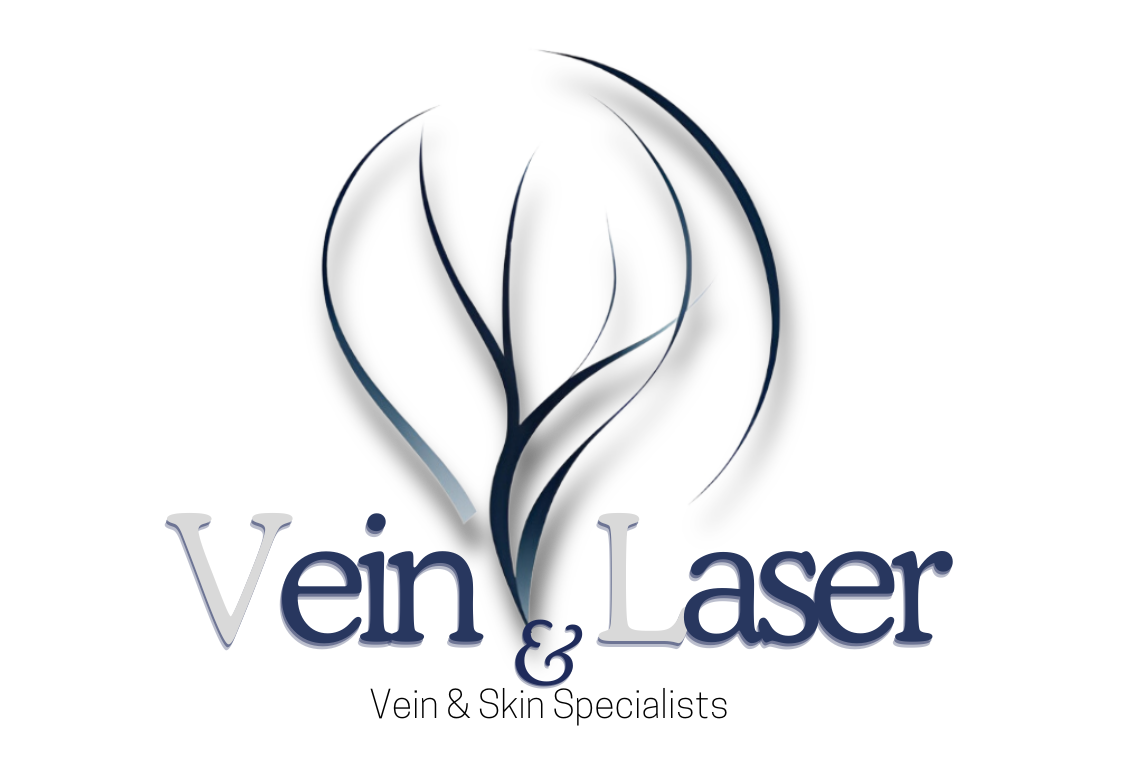 Spider vein treatment is a common procedure for those looking to reduce the appearance of spider veins on their legs or face. However, many people are hesitant to undergo treatment due to the fear of pain. In this blog post, we will explore the truth behind spider vein treatment and whether or not it is actually painful. Reger Vein and Skin Specialist led by Dr. Gregg Reger provides spider vein treatment to patients in The Woodlands, Spring and Houston TX.
Spider vein treatment is a common procedure for those looking to reduce the appearance of spider veins on their legs or face. However, many people are hesitant to undergo treatment due to the fear of pain. In this blog post, we will explore the truth behind spider vein treatment and whether or not it is actually painful. Reger Vein and Skin Specialist led by Dr. Gregg Reger provides spider vein treatment to patients in The Woodlands, Spring and Houston TX.
Understanding Spider Vein Treatment Options
Navigating the landscape of spider vein treatments can feel overwhelming, with several approaches available to those seeking relief from this common cosmetic concern. The primary treatments—sclerotherapy, laser therapy, and vein stripping—each offer unique methodologies for addressing the visibility and discomfort associated with spider veins.
Sclerotherapy, a prevalent choice among patients, entails the injection of a specialized solution directly into the vein. This solution irritates the lining of the blood vessel, causing it to swell, stick together, and eventually turn into scar tissue that fades from view. The process is notably quick, often taking no more than 30 minutes, and does not require anesthesia.
Laser therapy represents a non-invasive alternative, leveraging concentrated light beams to heat and damage the vein, leading to its gradual disappearance. This method is particularly appealing for its precision and the minimal downtime required post-treatment. It is especially effective for smaller spider veins and offers a convenient option for those apprehensive about injections or surgical interventions.
Vein stripping, though less commonly employed due to its invasive nature, involves the surgical removal of large spider veins. Performed under local or general anesthesia, this procedure is typically reserved for the most severe cases where other treatments may not be effective.
Each treatment option presents a tailored approach to spider vein management, varying in procedure specifics, recovery time, and effectiveness based on the individual’s condition and the severity of the veins being treated. The choice between these treatments hinges on multiple factors, including the size and location of the spider veins, the patient’s medical history, and personal preference. Understanding these options in depth enables individuals to make informed decisions in collaboration with their healthcare provider, ensuring the chosen method aligns with their health goals and comfort levels.
The Pain Scale of Spider Vein Treatments
Addressing concerns around discomfort, it’s crucial to understand that pain perception is highly individualized and what one person may find tolerable, another may find uncomfortable. For those considering spider vein treatments, the anticipated level of pain can vary significantly across the different methods available.
With sclerotherapy, patients typically report experiencing a mild to moderate prickling or burning sensation as the solution is injected. This sensation is usually brief and subsides shortly after the procedure. Most individuals find this discomfort manageable and are encouraged by the quick and straightforward nature of the treatment.
Laser therapy, on the other hand, is associated with a different type of discomfort. During the session, patients might feel a snapping sensation against their skin, akin to the snap of a rubber band, as the laser targets the veins. While this can be slightly uncomfortable, the procedure is quick, and cooling technologies are often employed to soothe the skin immediately, reducing the intensity of the sensation.
Vein stripping, while less commonly chosen due to its invasive nature, does involve a more significant degree of discomfort and a longer healing period. However, this procedure is performed under anesthesia to minimize pain during the surgery. The post-operative discomfort varies among individuals but is typically managed effectively with prescribed or over-the-counter pain relief medications.
It’s important for patients to have a comprehensive consultation with their vein specialist prior to deciding on a treatment path. During this consultation, discussing pain concerns and understanding the measures in place to manage discomfort during and after treatment can help alleviate anxiety. Moreover, the specialist can tailor the treatment approach to minimize discomfort based on the patient’s pain tolerance and the specifics of their spider vein condition.
Tips to Minimize Pain During Spider Vein Treatment
To alleviate discomfort associated with spider vein treatment, there are proactive steps both patients and healthcare providers can undertake. First and foremost, establishing a candid dialogue with your vein specialist is essential. Sharing your pain tolerance levels and any apprehensions can lead to adjustments in the treatment plan to minimize discomfort.
Pre-treatment strategies can also play a critical role in managing pain. Discuss the possibility of using topical anesthetic creams with your doctor, which can be applied to the treatment area to numb the skin, making the procedure more comfortable. In some cases, taking over-the-counter pain relievers a short time before your appointment may be advisable; however, this should only be done under the guidance of your healthcare provider to avoid any medication that could potentially thin the blood or interact with treatment outcomes.
For those undergoing sclerotherapy or laser therapy, wearing compression garments post-treatment can not only aid in the healing process but can also significantly reduce discomfort. These garments help by applying gentle pressure to the treated area, minimizing swelling and enhancing circulation, which can alleviate pain.
Relaxation techniques such as deep breathing or meditation can also be beneficial. Stress and anxiety can heighten pain perception, so arriving at your appointment in a calm, relaxed state can improve your overall experience. Additionally, ensure you stay well-hydrated before and after the procedure, as adequate hydration can aid in recovery and potentially lessen post-treatment discomfort.
Lastly, it’s vital to follow all post-treatment care instructions provided by your vein specialist. Adhering to these guidelines not only supports optimal healing but can also prevent unnecessary pain during the recovery period. If your specialist recommends avoiding certain activities or wearing compression stockings for a specific duration, following these directions can contribute to a smoother, less painful recovery process.
The Role of Technology in Reducing Pain
The evolution of medical technology has significantly enhanced the patient experience during spider vein treatments, making these procedures more tolerable and efficient. Innovative developments, particularly in the realms of sclerotherapy and laser therapy, have been pivotal in minimizing discomfort and improving outcomes.
In the case of sclerotherapy, the introduction of ultrasound-guided techniques has revolutionized the procedure. Ultrasound technology allows vein specialists to visualize veins with precise detail, ensuring the sclerosing solution is injected accurately into the target vein. This precision not only increases the effectiveness of the treatment but also minimizes the discomfort associated with misdirected injections, which can occur in traditional sclerotherapy.
Laser therapy has also benefited from technological advances. Modern laser systems are designed with features that enhance patient comfort, such as integrated cooling devices. These devices cool the skin before, during, and after the laser pulse, reducing the sensation of heat that can cause discomfort. Furthermore, the ability to adjust laser parameters, including wavelength and pulse duration, allows for a tailored approach that can effectively target spider veins while minimizing the impact on surrounding tissues.
Another noteworthy advancement is the development of less invasive laser fibers and catheters, which are used in endovenous laser therapy (EVLT) for larger spider veins and varicose veins. These tools require only a tiny incision, resulting in less pain and a quicker recovery compared to more invasive procedures.
The continuous improvement of technology in the field of vein treatment underscores a commitment to patient comfort and satisfaction. By reducing pain and recovery time, these technological advancements make spider vein treatment a more appealing option for those who may have previously been deterred by the prospect of discomfort.
When to Consult a Professional
Making the decision to seek treatment for spider veins is a significant step towards improving your cosmetic appearance and overall vascular health. The journey begins by reaching out to a qualified vein specialist who can evaluate your specific situation. During an initial consultation, the specialist will conduct a thorough assessment, which may include a physical examination and possibly an ultrasound study to understand the extent and nature of your spider veins.
A vein specialist’s expertise is crucial not only in diagnosing the condition but also in crafting a personalized treatment plan that considers your medical history, lifestyle, and preferences. They are equipped to explain the nuances of each treatment option, including expected outcomes, potential risks, and the recovery process. This information is invaluable in setting realistic expectations and preparing you mentally and physically for the procedure.
Furthermore, a professional can address any concerns or questions you might have about the treatment, especially regarding pain management. They will discuss strategies to minimize discomfort during and after the procedure, ensuring you are as comfortable as possible. This conversation might cover the use of local anesthetics, pain relief medications, and post-treatment care instructions to ease recovery.
Selecting the right specialist is also important. Look for a board-certified physician with experience in treating spider veins, and don’t hesitate to ask about their success rates and to see before-and-after photos of previous patients. Additionally, reviewing patient testimonials and seeking recommendations can help you find a trusted professional who aligns with your comfort level and treatment goals.
In summary, consulting with a vein specialist is a crucial step in the spider vein treatment process. It ensures that you are well-informed about your options and what to expect, leading to a more comfortable and effective treatment experience.
For More Information contact Reger Vein and Skin Specialists in The Woodlands, TX
For more information on procedures and treatments offered by Board Certified Phlebologist Dr. Gregg Reger at Reger Vein and Skin Specialists please call 832-585-0090 or click here to contact our team. Helping patients in Houston, The Woodlands, Springs, Katy and other surrounding areas of Texas.

